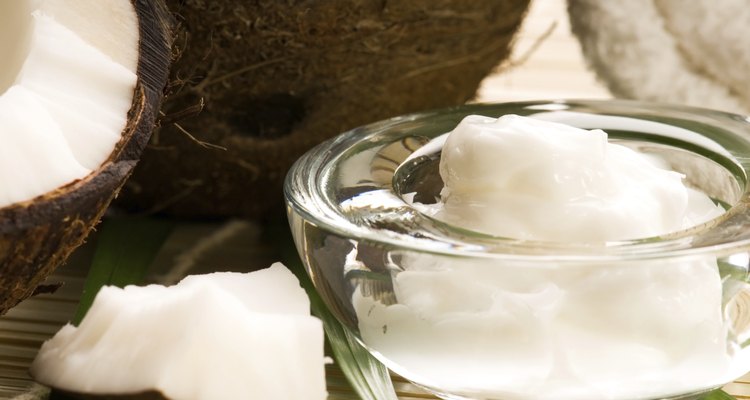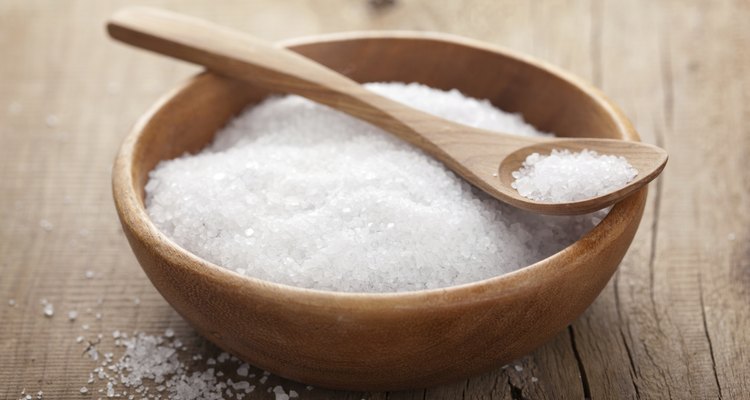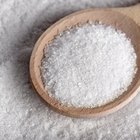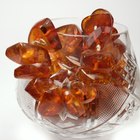
Pore-clogging ingredients can be found in skin care products, shampoos, cosmetics, facial moisturizers and other personal care products. Not everyone has a reaction to comedogenic ingredients, and if you have acne-prone or sensitive skin, you should avoid non-comedogenic products. Since everyone is different, it's advisable to speak to a doctor or dermatologist about pore-clogging products and what can be done to help your skin.
Lanolin

S847/iStock/Getty Images
Just as your skin makes sebum, a sheep's skin makes lanolin. Lanolin is a naturally occurring ingredient that makes wool soft. It's also used in skin-care products and cosmetics as an emollient, or substance that softens, smooths and moisturizes skin. The Face Reality Skin Care Clinic of San Leandro, California, lists lanolin and its synthetic derivatives among some of the pore-clogging ingredients found in personal care products. Lanolin and its derivatives ranked a four out of five when rated by the clinic on a five point scale, with ingredients rated five as having the most probability of clogging pores. Lanolin may show up on an ingredient list as acetylated lanolin, acetylated lanolin alcohol, athoxylated lanolin, PEG 16 lanolin or the less easily recognizable solulan 16.
Oils

joanna wnuk/iStock/Getty Images
Animal, vegetable or fragrance oils are comedogenic substances found in personal care products. Oils may be most recognizable in moisturizers, products that tend to be water-based or oil-based. The CNN Health website recommends choosing a water-based moisturizer to avoid clogging pores. Even oils touted as beneficial, such as coconut oil, have the potential to clog pores. Personal chemistry plays a part in whether certain oils clog your pores. Some of the oils of concern include coconut oil, cottonseed oil, hydrogenated vegetable oil, soybean oil and wheat germ oil. The Face Reality Skin Care Clinic rated these natural oils a four on the five-point scale for comedogenic propensity.
Salt

OlgaMiltsova/iStock/Getty Images
Salt can be used as a cheap and quick home exfoliating remedy. Contrary to what this may indicate, salt can clog your pores. Detergent-based soaps use salt to increase the viscosity of the product, according to “A Consumer's Dictionary of Skin Care Ingredients.” While salt on its own won't do much to clog your pores, it can have a negative effect when mixed with detergents in facial cleansers or shampoos. Detergents temporarily dry out your skin. “Acne for Dummies” cautions that if your skin becomes too dry, you will produce more sebum. Salt hardens the sebum, causing it to stick in pores and form pimples. Everyone's skin has the potential to react differently, but the Face Reality Skin Care Clinic rated salt, or sodium chloride, a five out of five as a potential pore-clogging ingredient.
Related Articles

Ingredients in Facial Cleansers

Nivea Q10 Moisturizer Vs. Aveeno ...

Avocado Masks for All Skin Types

Epsom Salts & Ingrown Hairs

How Does Homemade Soap Compare to ...

What Is the Meaning of Judgmental?

How to Gargle With Sea Salt

Acne Ingredients to Avoid

Are Products With Sodium Laureth ...

What Are the Ingredients in Proactiv?

What Are the Main Ingredients of Bath ...

Is Allantoin a Relative of the Lanolin ...

Nutritional Information for Johnny's ...

Olive Oil Soap for Acne

Benefits of Sea Salt Glow Body Treatment

What Is Cognac Amber?

Merle Norman Ingredients

Face Wash Ingredients

What Foods Provide Calcium D-Glucarate?

What Are the Benefits of Salt Water Hot ...
References
- "Acne for Dummies"; Herbert P. Goodheart; 2005
- DermNetNZ: Emollients and Moisturizers
- IOI Lanolin: Lanolin Basics
Writer Bio
Elizabeth Tumbarello has been writing since 2006, with her work appearing on various websites. She is an animal lover who volunteers with her local Humane Society. Tumbarello attended Hocking College and is pursuing her Associate of Applied Science in veterinary technology from San Juan College.
Photo Credits
skin care image by anna karwowska from Fotolia.com